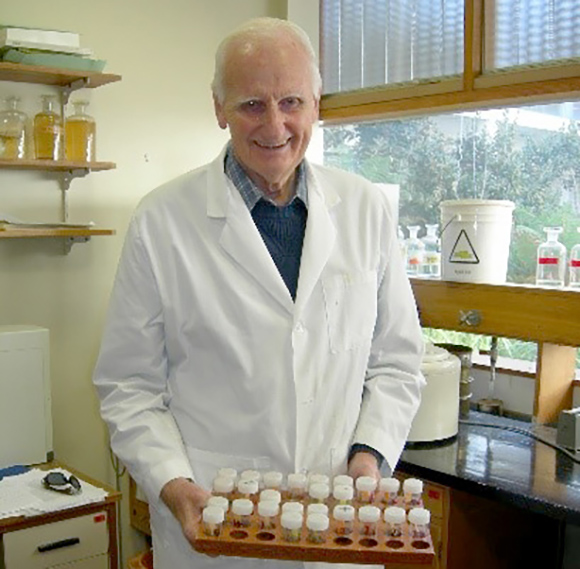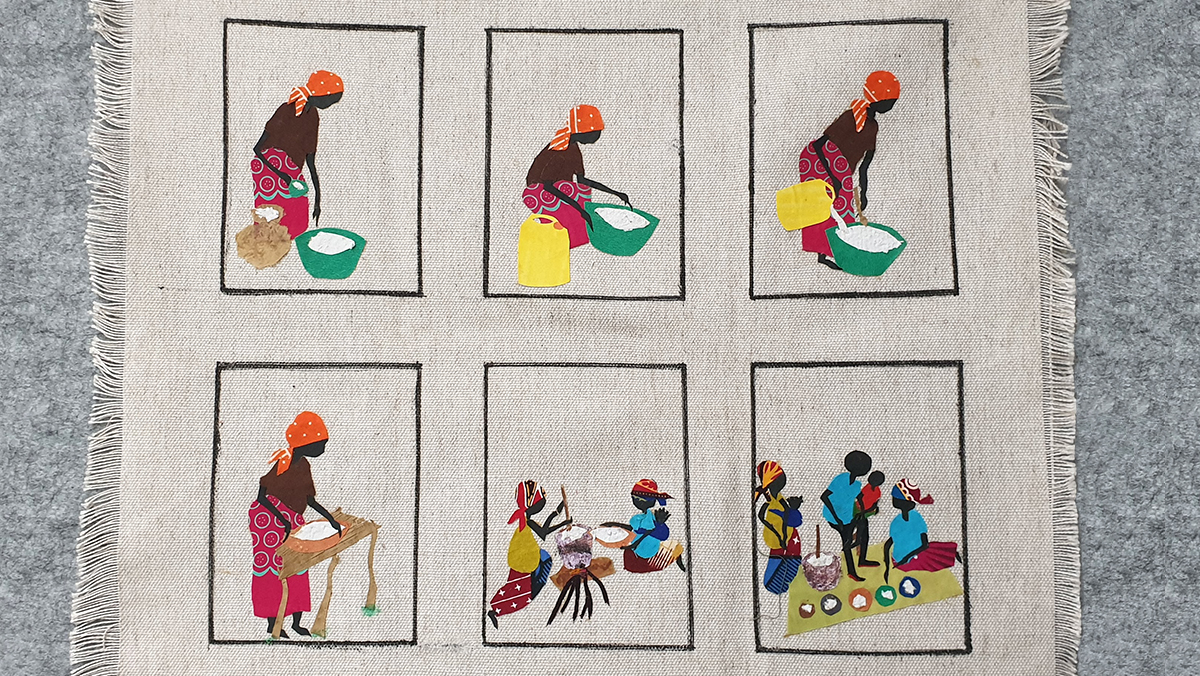About
Konzo Prevention Unit
- The late Dr Howard Bradbury, founder and chemist with a later career focus on konzo.
- Professor William Foley, background in nutrition.
- Jan Elliott, background in laboratory research administration.

The Konzo Prevention Unit was founded by Dr Howard Bradbury to continue his work in retirement preventing konzo. In 1995 he developed simple field kits to test cyanide in cassava and thiocyanate in urine. Then in 2005 he developed the “wetting method“ to remove cyanide compounds from cassava flour. In 2015, Professor William Foley, Jan Elliott and Ursula Wiedemann took on the responsibility to continue his work to prevent konzo through his collaborations and supply of the field kits, while Dr Bradbury moved to complete retirement as he reached his 90th year. Although he passed away in November 2016, he leaves a viable group to continue his legacy along with the many collaborations and networks he initiated.
Future work to control konzo
We are supporting the establishment of the Safe Cassava Working Group. This network will bring together researchers from medical, genetic, agricultural and public health fields and foster new collaborations around the world.
After our curtailed project developing an education program with INCEF, we are working to publish the educational videos to allow free access for all.
We appeal to funding agencies for financial support to prevent konzo amongst the poorest of the poor children and young women of DRC. Donate now
Wetting method
In 2005 we discovered a new wetting method that reduces greatly the cyanide content of cassava flour. Water swells the flour and allows contact between linamarin and the enzyme linamarase that catalyses the breakdown of linamarin to acetone cyanohydrin, which breaks down spontaneously to liberate hydrogen cyanide gas. The process requires standing in the sun for two hours or in the shade for five hours (see Publications Nos. 8, 12 and 13).
This reduces nearly all the residual cyanide and Dr Bradbury described the wetting method as a gift from God. The method was checked out in Mozambique where we showed it requires little extra work or equipment and the traditional thick porridge made from treated flour is free of the bitter taste due to linamarin present in the untreated flour.
Recently the World Bank, WHO and FAO recognised the wetting method as a sensitive intervention to remove cyanogens from cassava flour.


Animation produced by SAWBO (Scientific Animations Without Borders) 2012.
The detailed wetting method is as follows:
The cassava flour is placed in a bowl and its height is marked on the inside of the bowl. Water is added with mixing and the volume of the flour initially decreases, but then increases and more water is added until the flour reaches the mark. The evenly wet flour is spread out on a mat or basket in a thin layer not greater than a fingernail thick (about 1 cm) and left in the sun for 2 hours or the shade for 5 hours to allow hydrogen cyanide gas to escape. The wet flour is then added to boiling water in the traditional way to make a stiff porridge called fufu, which is eaten with something to give it flavour such as beans or a sauce.
Mild method to remove cyanogens from cassava leaves
Cassava, the staple food of tropical Africa has a starchy root and leaves that are rich in protein, vitamins and minerals. Cassava leaves may be harvested throughout the year and are used particularly by the Congolese population of Central Africa and in Liberia, Sierra Leone and Guinea while there is moderate use in other tropical African countries. By contrast, cassava leaves are not used at all in the South Pacific, because of their high levels of toxic cyanogens and the ready availability of other greens. Cassava leaves contain large amounts of cyanogenic glucosides, which are broken down by the enzyme linamarase to produce cyanohydrins that are further decomposed by another enzyme hydroxynitrile lyase also present in the leaves, to give hydrogen cyanide (HCN) and a ketone.
The supply of protein is inadequate for poor village people living in the savanna and subsisting on a monotonous diet of bitter cassava roots, but is improved somewhat by consumption of cassava leaves as the main subsidiary food. The leaves are usually pounded for 10-15 min, which allows the enzymes to come in contact and catalyse hydrolysis of the cyanogens, followed by boiling in water for 10-120 min to remove all cyanogens, but boiling pounded leaves for 30 min was found to reduce the protein content by 58% and the amino acid methionine content by 71%. This large loss of protein and methionine due to boiling pounded cassava leaves in water means that less than one half of the original protein and methionine would be available to detoxify ingested cyanide to thiocyanate. Furthermore there are large losses of vitamin C, thiamin, riboflavin and nicotinic acid due to boiling.
We have developed a mild method to remove cyanogens from cassava leaves that involves three consecutive steps (1) pounding, (2) standing for 2 h in the sun or 5 h in the shade in the tropics and (3) washing three times in water (see Publications No. 5). We used four cassava cultivars and the mean residual total cyanide content after steps 1, 2 and 3 was 28%, 12% and 1% respectively. The pounded cassava leaves retain their bright green colour and texture. The traditional method for removing cyanogens from pounded cassava leaves is by boiling in water which removes all cyanogens in 10 minutes. However boiling causes the pounded leaves to become dull green in colour and there is considerable losses of vitamins, protein and methionine, which are already in short supply in the diet of poor village people in tropical Africa.
It is hoped that this mild method of removing cyanogens from cassava leaves, may be a useful alternative to boiling pounded leaves in water, which would save on fuel for cooking and much more importantly would improve the nutritional status of the cassava eating population of tropical Africa.
Wetting method to remove cyanide from gari
Whereas cassava flour is preferred and used in eastern, southern and central Africa, gari is the processed cassava product of choice in West Africa. Gari is produced by grating cassava roots followed by a fermentation process, squeezing off liquid and roasting. The residual total cyanide content is about 20 ppm, compared with about 45 ppm for cassava flour. Lactic fermentation lowers the pH of gari to about 4.1 and under these conditions the residual cyanide, present as acetone cyanohydrin, is stable. We have found that if the pH is raised to 5, by adding excess pH 5 buffer or an equal amount of cassava flour, and heating at 50 degrees C for 4 hours, the total cyanide content can be reduced by 50%. The final wetting method involves mixing gari with flour (1:1), wetting with water and standing for 4 hours in the sun. We hope that this method may prove useful to reduce the amount of tropical ataxic neuropathy (TAN) in Nigeria (see Publications No. 9).
